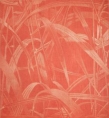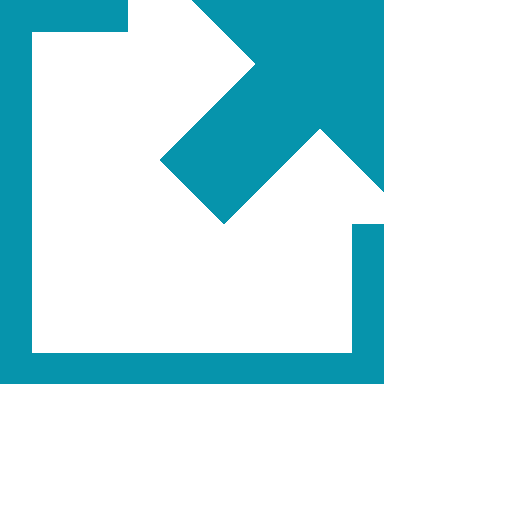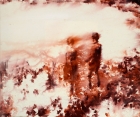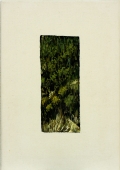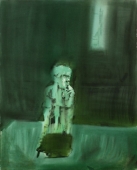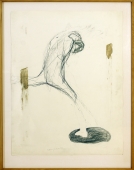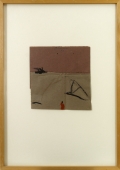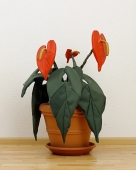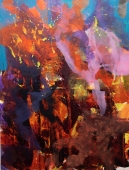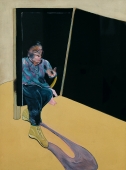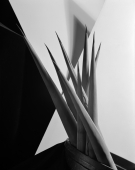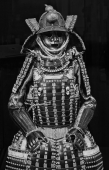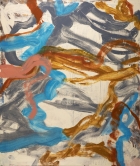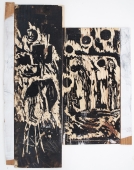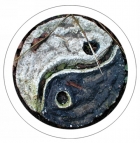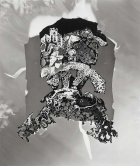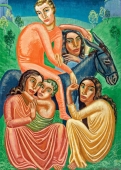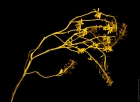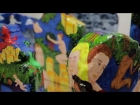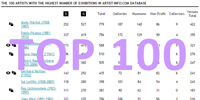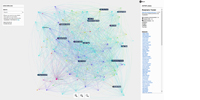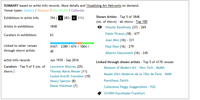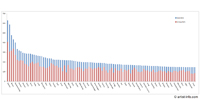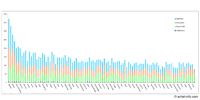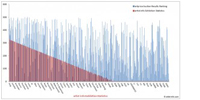
Artist | Franz Gertsch (1930 - 2022)
https://www.artist-info.com/artist/Franz-Gertsch
About the work (english / deutsch)
About the work (english / deutsch)
Woodcuts
When, in 1986 Franz Gertsch laid down his brush, we put the monumental portraits of women he had made in the Eighties on display in the Kunsthalle in Basel. Franz Gertsch painted them on cotton that had not first been grounded. In transparent layers he placed brush drop next to brush drop, an infinite number of them, graded by tone, luminous in color, bright or dark, often as diffuse as the light which manages to pierce through the early morning mist. They were pictures of overtwhelming beauty which captivated you with their suggestive spatiality, and yet kept you at a distance. The artist required as long as a year to make a picture like Johanna I, which measured 330 by 340 cm and was produced between 1983 and 1984.
In that year, in 1986, Franz Gertsch began his woodcuts. First there were portraits, then landscapes, too, followed by a river-bed, the moving surface of water. Leaf forms and leaf structures are more recent efforts. These woodcuts are simply quite unprecedented in size, if you assume, for example, that a portrait of a woman measures 232.5 by 182 cm. The expression "woodcut" is, in fact, misleading, for as with the paintings, we do not see strokes but dot-like notches produced using a hollow chisel; the result is an infinitely large number of indentations of differing densities that absorb no dye when the wood plate is inked.
In the course of 15 years, Franz Gertsch had refined and internalized the painterly process to such an extent that in the course of the exceptionally long production process, the object of the painting, namely the picture, became to some extent secondary. It was not the painting that was the goal, but the time it took to create it. The time required to produce the painting - portraits of women which were large and full of a distanced beauty that was nevertheless completely steeped in the present - somehow transcended the painting in the sense of extreme concentration and the spatial transgression of time. Franz Gertsch's paintings had been instilled with such gravity by virtue of the density of the painterly process that it was not possible to intensify it further. The presence of the "here and now" had reached its greatest possible expansion in time and space.
Back then I had not grasped this; or, put differently: I did not want to notice the fact, because these paintings were so important for me. Today, with the benefit of distancing hindsight, it is reasonable to assume that Franz Gertsch wished to change the object fundamentally, i.e. the portrait or the landscape, by means of time - the time he dedicated to these motives. If time is the real theme, then the traces of time - as notches, witnesses to the material-based resistance - the object as a diffuse momentary image is redeemed and dissolved. Franz Gertsch uses each notch to embody time more strongly than he did with brush strokes. And each notch participates in a picture, which transposes the presence of action into the presence of the picture. The picture literally recedes into the background. It appears to be an intimation of a possible picture, but only because this anticipation is incredibly precise can it, in the form of a picture, recede into the background. If it were not precise, then the picture would disappear. The picture would become a no-man's land.
German text by Jean-Christophe Ammann / Translation by Jeremy Gaines
(Extract - Full printed version available in the Museum)
MMK - Museum für Moderne Kunst, Frankfurt am Main
Holzschnitte
Als Franz Gertsch 1986 den Pinsel zur Seite legte, haben wir in der Kunsthalle Basel seine monumentalen, in den Achtziger Jahren entstandenen Frauenbildnisse ausgestellt. Franz Gertsch malte sie auf ungrundierte Baumwolle. In transparenten Schichten setzte er Pinseltupfer neben Pinseltupfer, unendlich viele, tonal abgestuft, leuchtend in den Farben, hell oder dunkel, oft diffus wie das Licht, das durch den frühmorgendlichen Nebel dringt. Es waren Bilder von überwältigender Schönheit, denen man ausgeliefert war, die einen in ihrer suggestiven Räumlichkeit gefangennahmen und auf Distanz hielten. Für ein Bild wie Johanna I, entstanden 1983/84, in der Größe von 330 x 340 cm, brauchte der Künstler ein ganzes Jahr.
In diesem Jahr, 1986, begann Franz Gertsch seine Holzschnitte. Zuerst waren es Porträts, dann auch Landschaften, ein Flußbett, bewegte Wasserflächen. Neueren Datums sind Blattformen und Blattstrukturen. Holzschnitte in einer bisher nicht vorstellbaren Größe, wenn man davon ausgeht, daß ein Frauenbildnis 244 x 184 cm mißt. Der Ausdruck "Holzschnitt" ist mißverständlich, denn wie bei den Gemälden geht es nicht uni Pinselstriche, sondern um punktartige, mit dem Hohleisen ausgeführte Einkerbungen, die eine unendlich große Anzahl von Vertiefungen unterschiedlicher Dichte ergeben, die beim Einfärben der Holzplatte keine Farbe aufnehmen.
Franz Gertsch hat in fünfzehn Jahren den malerischen Prozeß derart verfeinert und verinnerlicht, daß über den extrem langen Herstellungsvorgang der Gegenstand der Malerei, nämlich das Bildnis, gewissermaßen sekundär wurde: Nicht das Bildnis war das Ziel, sondern die Zeit, es zu verwirklichen. Die beanspruchte Zeit, das Bildnis zu malen - Frauenbildnisse von großer, ja entrückter Schönheit, die ganz in der Gegenwart verhaftet sind - hob das Bildnis im Sinne äußerster Verdichtung und räumlicher Entgrenzung von Zeit auf. Die Bildnisse von Franz Gertsch hatten über die Dichte des malerischen Vorgangs eine Schwerkraft erreicht, die nicht weiter vorangetrieben werden konnte. Die Gegenwärtigkeit des Hier und Jetzt hatte die größtmögliche Ausdehnung in Raum und Zeit erfahren.
Das hatte ich damals nicht verstanden, oder anders ausgedruckt: Ich wollte es wohl nicht wahrhaben, weil mir die Gemälde so sehr am Herzen lagen. Heute, aus der Distanz gesehen, ist einsichtig, daß Franz Gertsch den Gegenstand, also das Bildnis oder die Landschaft, noch viel stärker mittels Zeit - die Zeit, die er diesen Motiven widmet - zu verändern trachtete. Wenn schon die Zeit das eigentliche Thema ist, dann mußten die Spuren der Zeit - als Kerben Zeugen materialbedingten Widerstandes - den Gegenstand als diffuses Momentbild ein- und auflösen. Stärker als mit dem Pinselstrich verkörpert Franz Gertsch mit jeder Kerbe Zeit. Und jede Kerbe partizipiert an einem Bild, das die Gegenwärtigkeit des Handelns in die Gegenwärtigkeit des Bildes überführt. Das Bild tritt buchstäblich in den Hintergrund. Es erscheint wie eine Ahnung eines möglichen Bildes, aber nur, weil diese Ahnung unerhört präzis ist, kann sie, als Bild, in den Hintergrund treten. Wäre sie nicht präzis, würde das Bild verschwinden. Das Bild würde zu einem Niemandsland.
Text von Jean-Christophe Ammann
(Auszug - Der vollständige Text ist als Informationsblatt beim Museum erhältlich)
MMK - Museum für Moderne Kunst, Frankfurt am Main
 offers / Requests offers / Requests  |
About this service |
|---|
 Exhibition Announcements
Exhibition Announcements
 Visualization |
Learn more about this service | ||
|---|---|---|---|
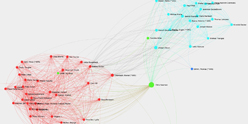
Interested in discovering more of this artist's networks?
3 easy steps: Register, buy a package for a visualization, select the artist.
See examples how visualization looks like for an artist, a curator, or an exhibition place: Gallery, museum, non-profit place, or collector.

Exhibition History

|
SUMMARY based on artist-info records. More details and Visualizing Art Networks on demand. Venue types: Gallery / Museum / Non-Profit / Collector |
||||||||||||
| Exhibitions in artist-info | 100 (S 45/ G 55) |
Did show together with - Top 5 of 1436 artists (no. of shows) - all shows - Top 100
|
||||||||||
| Exhibitions by type | 100: 16 / 60 / 23 / 1 | |||||||||||
| Venues by type | 63: 14 / 27 / 21 / 1 | |||||||||||
| Curators | 31 | |||||||||||
| artist-info records | Jun 1959 - Jan 2017 | |||||||||||
|
Countries - Top 5 of 9 Germany (41) Switzerland (33) France (5) United States (4) United Kingdom (3) |
Cities - Top 5 of 45 Burgdorf (20) Berlin (11) Frankfurt am Main (7) Zürich (5) New York (4) |
Venues (no. of shows )
Top 5 of 63
|
||||||||||
Curators (no. of shows)
Top 5 of 31
|
| Osthaus Museum Hagen | G | Oct 2016 - Jan 2017 | Hagen | (26) | +0 | |
| Skopia | S | Nov 2014 - Dec 2014 | Genève | (17) | +0 | |
| Museo de Bellas Artes | G | Oct 2014 - Jan 2015 | Bilbao | (5) | +0 | |
| Letze, Otto (Curator) | +0 | |||||
| les Abattoirs - FRAC Midi-Pyrénées | S | May 2014 - Aug 2014 | Toulouse | (11) | +0 | |
| Museum Kurhaus Kleve | S | Mar 2014 - Sep 2014 | Kleve | (68) | +0 | |
| Museum Franz Gertsch | S | Mar 2014 - Aug 2014 | Burgdorf | (50) | +0 | |
| Keep reading |













